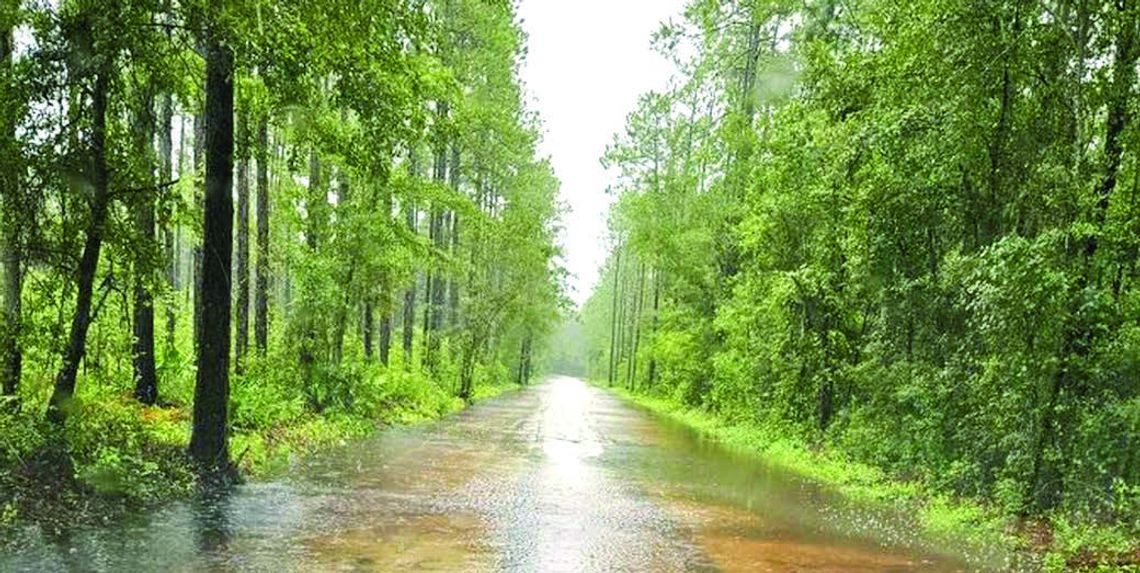Georgia’s cleanup from this week’s storm has moved from response to recovery, as the heavy rains and flooding brought by Tropical Depression Debby continue moving toward the mid-Atlantic and northeastern states.
“The storm is behind us, but certainly the recovery is not,” Gov. Brian Kemp said in Savannah Friday after touring damaged coastal communities by air.
Sporadic power outages, mostly from fallen trees, flooding on outlying dirt roads and a delay in opening school were the major issues experienced from Debby’s visit as a tropical storm across south Georgia.
After making landfall as a Category 1 hurricane in Florida’s Big Bend area, Debby arrived in the early morning hours of Monday (August 5). Her outer rain bands began showing around dawn Monday and continued through Tuesday night (August 6).
The rain sent the Satilla River out of its banks Wednesday, rising above its flood stage of 16 feet.
It was expected to fall below flood stage ending the weeklong flood warning toward a final level of 13.8 feet Thursday morning, according to the NWS.
Tropical storm force winds appeared only in gusts, measuring 44 mph at 10:35 a.m. and 43 mph at 9:35 p.m. Monday. The top gust was part of the highest maximum sustained winds of 31 mph also registered at 10:35 a.m.
The area went under a tropical storm watch Friday (August 2) by the NWS, and it was upgraded to a warning two days later. A flood warning followed early Monday (August 6) when the Satilla’s level was 11.6 feet at 8:45 a.m.
Idalia, a Category 3 hurricane, passed through the area August 30-31, 2023 as a tropical storm with numerous gusts registered at 50-plus mph and one just short of hurricane strength of 75 mph.
Kemp said eight dams were breached after Debby hit, four in Bulloch County alone.
About 138,000 customers lost power at the height of the storm, while 59 schools were closed. Those numbers were down by Friday (August 9) to fewer than 1,200 without electricity, while 13 schools remained closed, Kemp said.
The most serious damage occurred to farm crops and livestock. Commissioner of Agriculture Tyler Harper said the state lost about half of the tobacco crop, while other crops including peanuts also sustained heavy damage.
Kemp urged farmers and ranchers to document their losses to they can compile accurate applications for federal aid. President Joe Biden approved the state’s request for an emergency declaration covering 55 counties.
“It’s hard to get relief if we don’t have the proper documentation,”
Kemp said.
There was one storm-related death in Georgia, which occurred on Monday when a tree fell on a home in Moultrie and killed a 19-year-old man.
“It could have been a lot worse,” said Chris Stallings, director of the Georgia Emergency Management/Homeland Security Agency.
The National Hurricane Center predictions placed rainfall totals as high as 20 inches over a 36-48 hour period. One of those things was a system of dry air that pushed into the area simultaneously and made the heavy rains that were expected be not so heavy.
Locally, life tried to get back to normal Wednesday (August 7) after two days of closures and cancellations.









